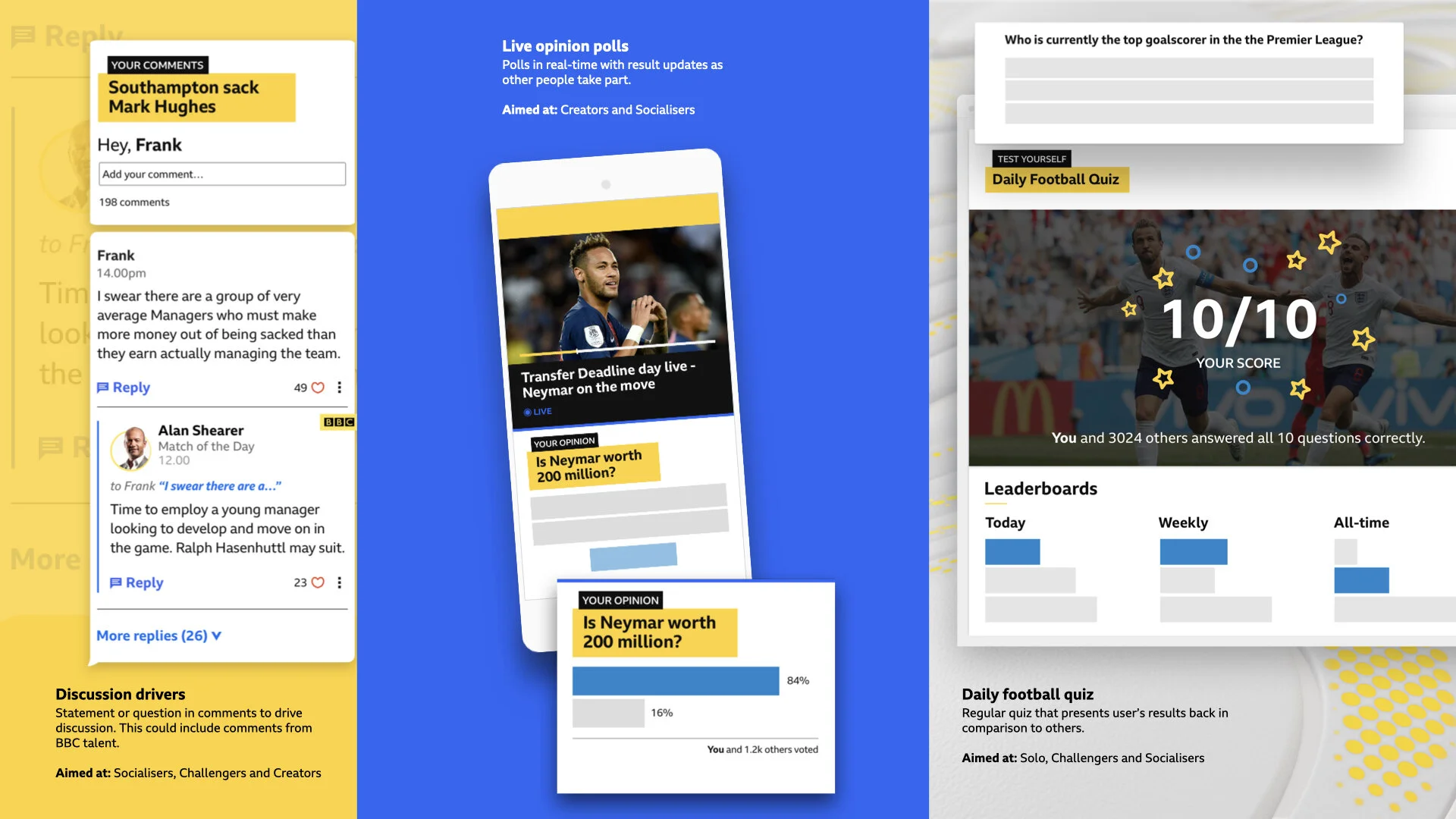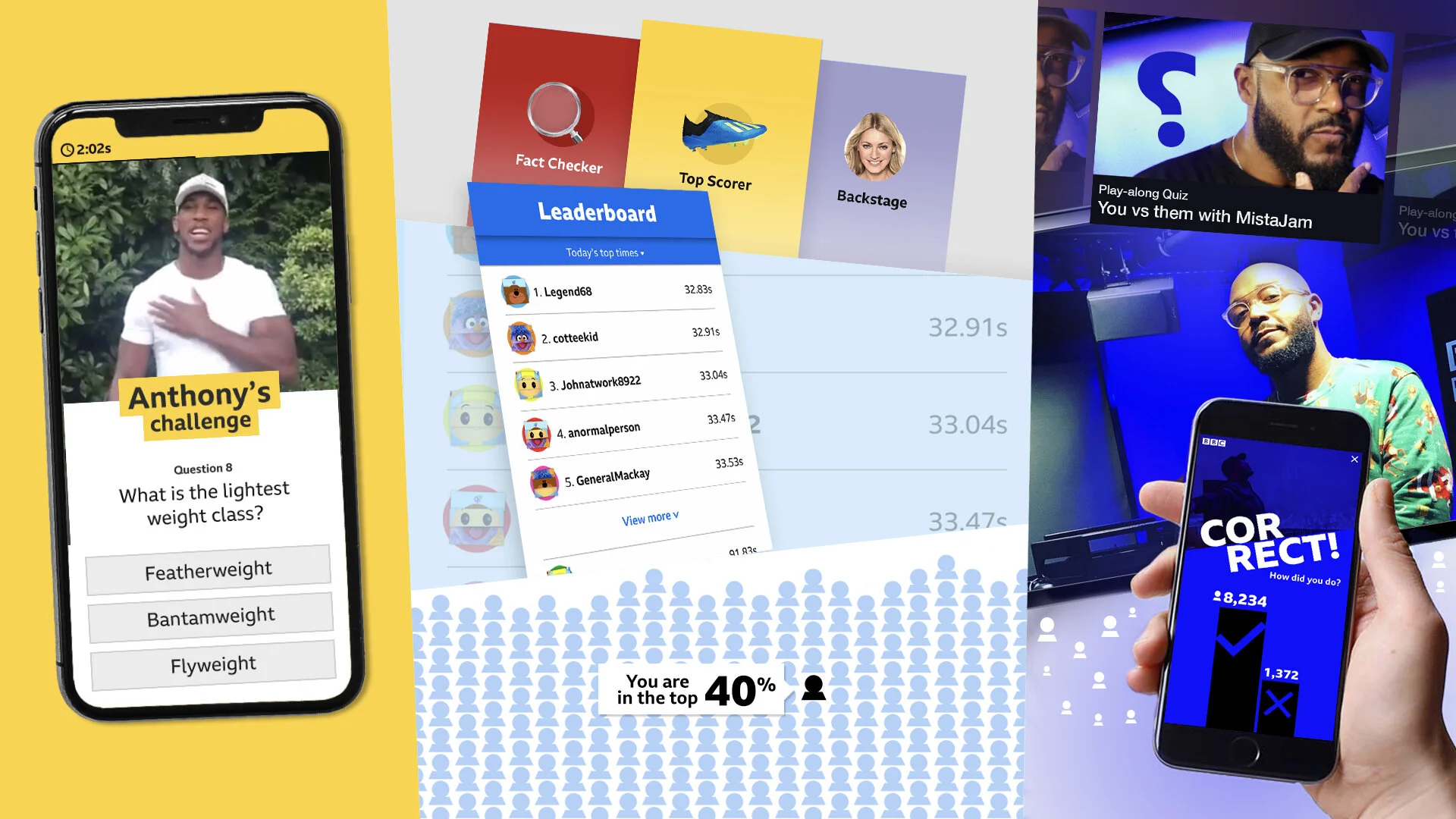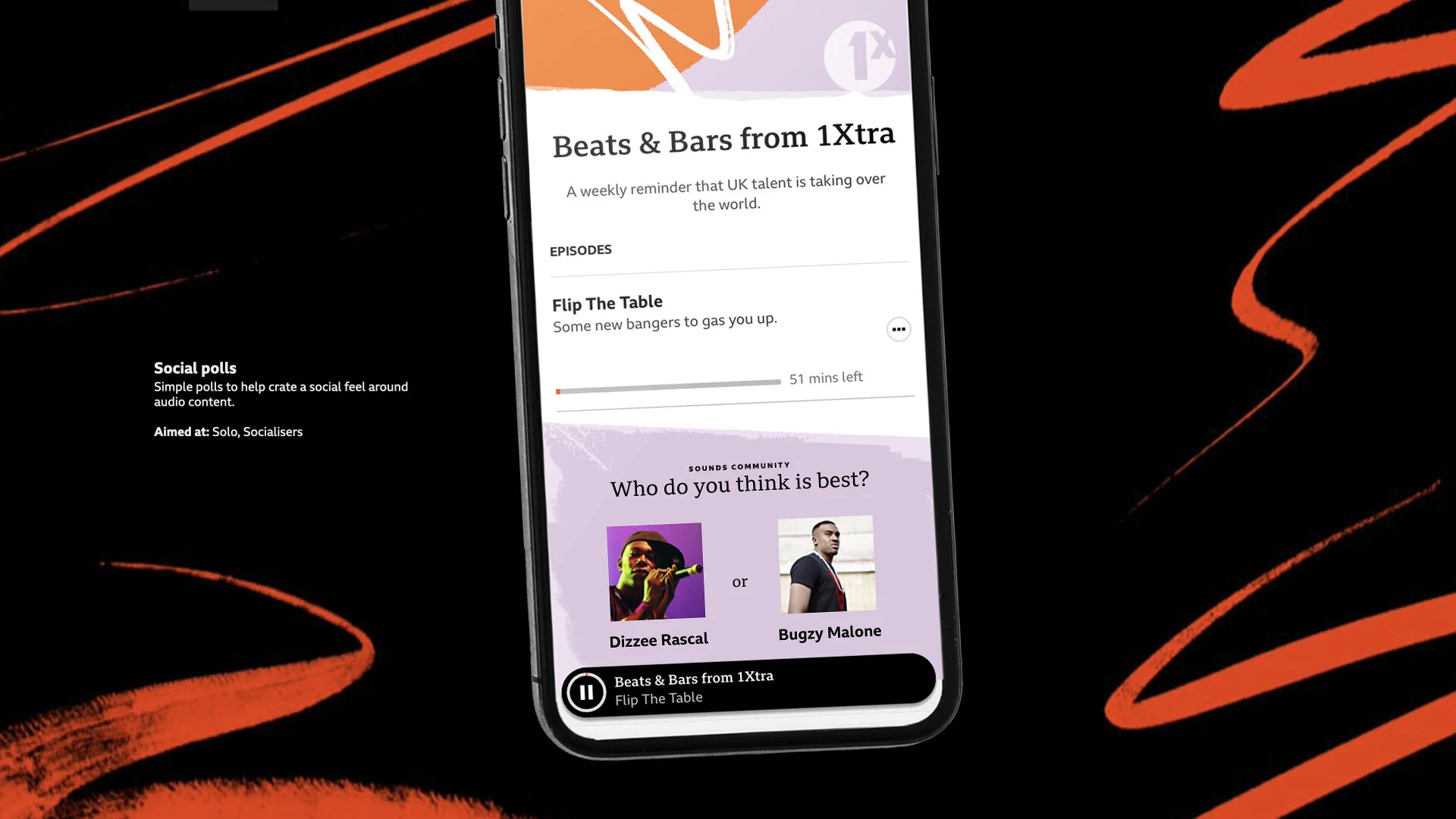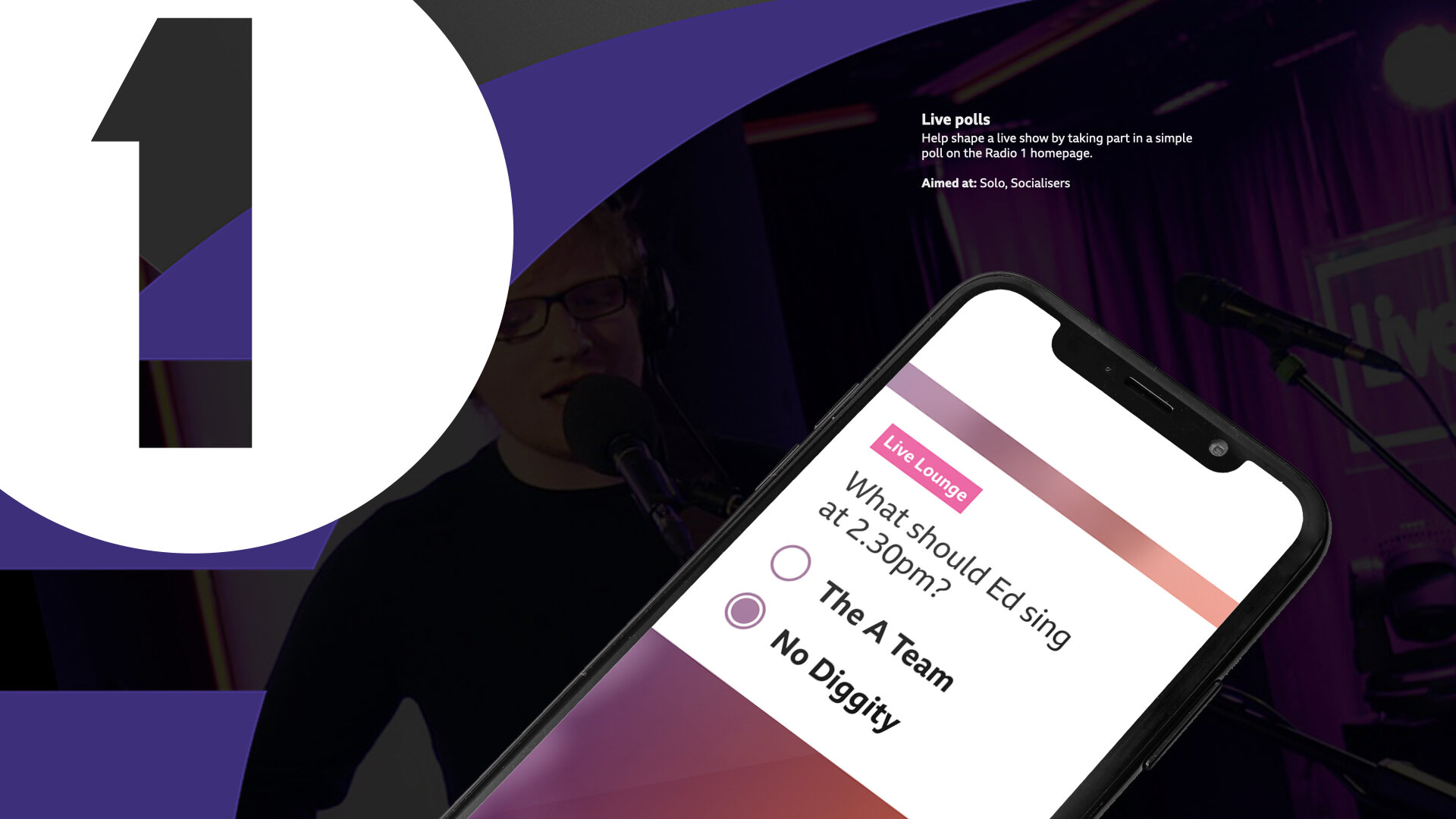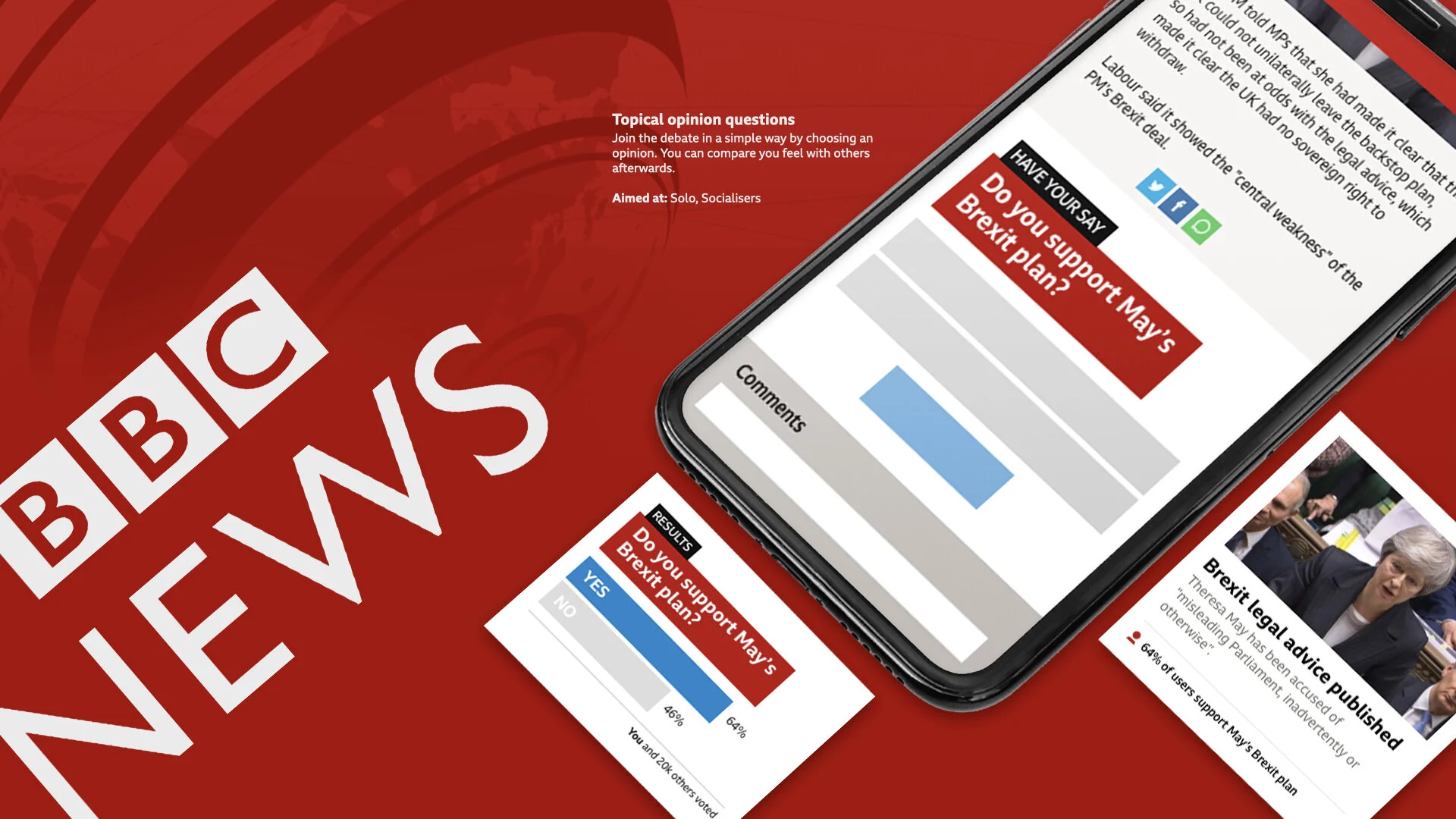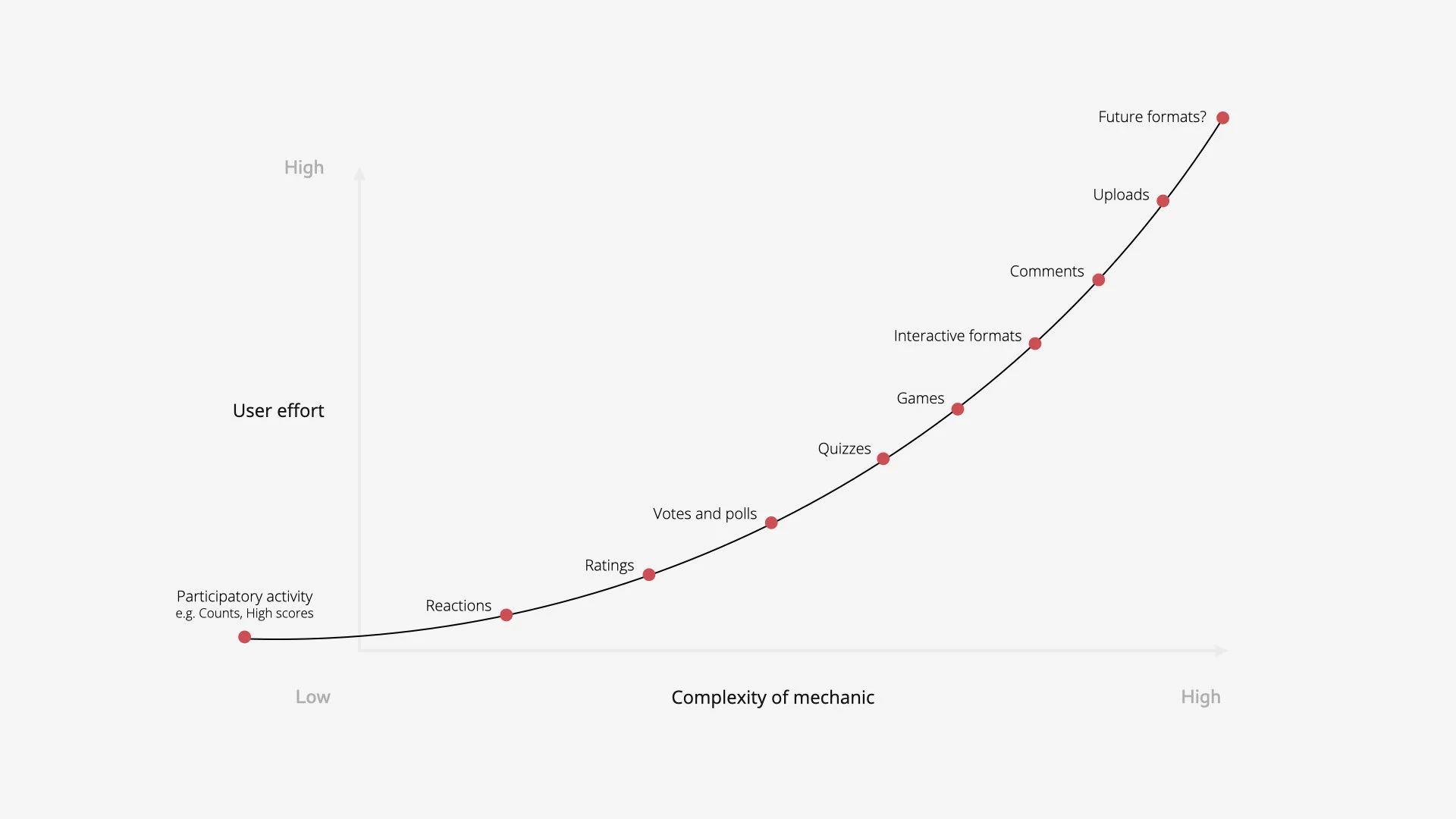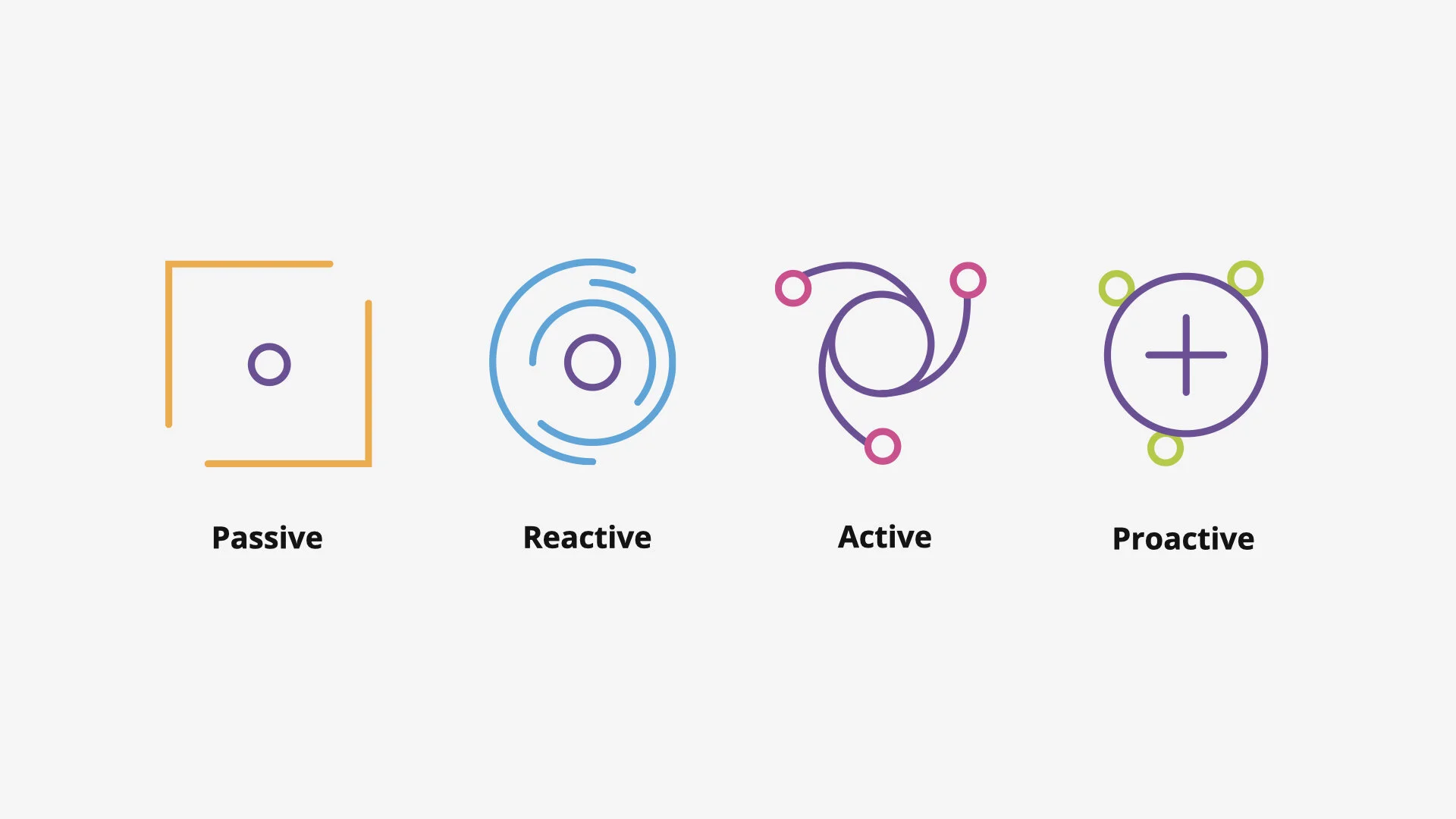PAN-BBC
Participation Strategy
Brief
Make a case for participation on BBC online
Challenge
Our audience is at the heart of everything we do but currently we don’t offer them a chance to participate on our platforms.
Our aim was to develop an understanding of our audiences desires and motivations around participation. There are clear examples of successful participation on other platforms such as Facebook and Twitter, however this didn’t mean they would want these experiences with the BBC.
We had to take stock and understand current research which had been conducted in pockets across the BBC. Leveraging this, we conducted a large scale piece of research.
The project also had to unite teams across the BBC working on participation, opening up a dialogue across disciplines, enabling collaboration and ensuring that work wasn’t being duplicated.
Solution
We delivered a strategy which identified key insights around how our audience currently participate online, how varying features appeal to young audiences and the potential size of the market opportunity. This was shared with teams across the BBC through a road show of presentations.
My Role
In order to get this project started we needed to showcase first how participatory features could be leveraged on the BBC. As a team of 3 designers and a product owner we ideated around initial areas - to do this we took formats (quizzes, comments, polls etc) and explored how they could be layered on both our products and content.
These ideas where filtered and brought together in a pitch deck that we presented to the BBC senior leadership team. For the visuals I used a combination of photoshop, sketch and keynote.
This presentation highlighted to the senior leadership team that this was an area worth exploring and a participation working group was created, consisting off product, marketing, editorial, UX, from all key products across the BBC.
We were tasked with delivering a large piece of research around participation. The project was driven by a core team in UX, consisting of me, another designer and a senior product manager. As an extension of the team there was a key stakeholder assigned from editorial and marketing. Through weekly check-ins I worked with them to integrate their expertise, whilst also connecting me with colleagues from their disciplines that could help to contribute to the research.
We organised an open invite participation show and tell. This gave a platform for any current participation work to be showcased, raising awareness across the business. We used this as a chance for anyone to step forward and help contribute to the research. I was responsible for working with the various presenters to put together their presentation for the show and tell, whilst also pitching and explaining our research on the day.
The aim of the research wasn’t to test specific ideas but to gather insight about the different types of participator, how varying features appeal to a young audience and the potential size of the market opportunity.
The research was used to validate a scale of types of ‘participators’ that had been created by the marketing team. (These icons are part of the final design language I created for the research).
To complete the research we worked with consumer insight agency Join the Dots and a community panel of users. The panel took 350 u-35s and delivered two ideas a week for 6 weeks. The ideas where explained through one minute videos which showcased some potential participatory features and gathered the panels feedback on each area.
There where 12 ideas, these covered a range of features including video experiences, the audience giving their views or opinions on our content and learning/improving themselves.
I worked with another designer, our researcher and Join the Dots to create a range of base questions around each idea (How likely they are to use, how appealing it is, how often, what could improve it) which allowed us to compare all ideas across the panel consistently. To do this I brought together an initial proposition on dropbox paper. These were then shared with Join the Dots and we worked together to develop a final range of questions.
Once the questions were laid out, it was my job to generate the videos for each idea - this was a collaborative process and involved discussions with a range of disciplines and products from across the BBC.
A lot the ideas came as a result of our show and tell at the start of the project which successfully made a call for contributions.
We worked in one week sprints to deliver each idea. I would have an initial conversation with the idea stakeholder early in the week, talking through the idea and what they wanted to find out, allowing me to tailor the questions.
With their help I would create a one minute video which summarised the ideas/area and communicated it in a simple way. This was a challenge as the videos had to be broad and appeal to the range of interests within the panel.
The video creation process was driven by regular check-ins throughout the week. Firstly I would create an initial storyboard and voiceover. This would be presented to the leading product manager, idea stakeholder and Join the Dots, ensuring all parties were happy with the idea proposition.
Once agreed, I would develop final visuals and bring the idea to life using a keynote template. As I was responsible for delivering two ideas a week it was key that the keynote template provided a quick way to bring the video together.
Finally, the video would be shared each Thursday, allowing any feedback to be applied Friday morning ahead of final sign off by each party. I then had to ensure that all deliverables were available to Join the Dots to share with the panel over the weekend.
Designing the visuals for this project was one of the highlights, each idea was content led, which meant the UI had to be stripped back and simple - focusing on the story and communicating clearly with the panel. I used a combination of Sketch and Photoshop to bring together the visuals.
Once the panel was completed I worked with Join the Dots to provide a design language for the final research document, along with how the data could be presented.
We took the insights, condensed them and formed it into two documents, one presentation which we took on a roadshow and presented across the BBC, making the case for participation. The second was a summary of the research, giving the teams who wanted to create participatory experiences the toolkit to do so.
Summary
On the back of this research a participation team was formed to help drive and build pan-BBC participatory features. A range of trials were set up to demonstrate further how participation could help to engage our audiences.
I led on the first trial which focused on weekly quizzes, we chose to leverage the Apprentice brand. The quiz was shared through social media channels each week following the show. The aim of this was to highlight how a regular could help build habit and retention.
This project allowed me to make connections, collaborate and manage stakeholders from across the BBC, working with them to transform their ideas into stories.
Workshop preparation and facilitation
Ideation
Concept generation
Research
Collaborating cross discipline
UI design
Storytelling
Stakeholder management
Leading
Developing strategy
